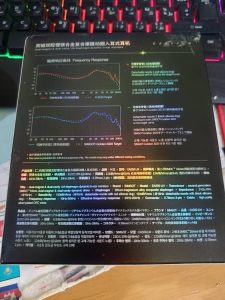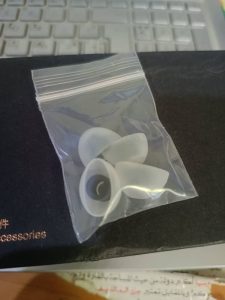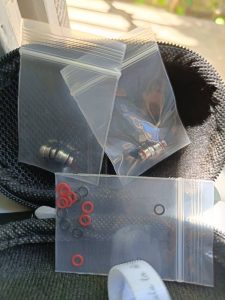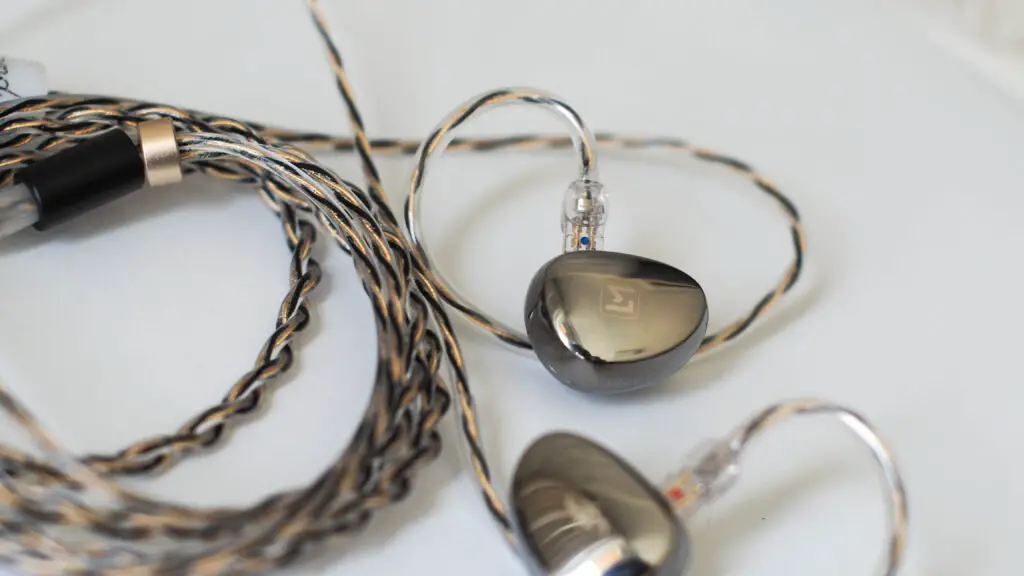So If you’ve seen the leaks for Simgot’s 2024 release, you know they’re not going to be sitting pretty this year. From sources to TOTLs, they’ve got everything arranged. Today, we’ll discuss their update to possibly their most renowned set, the one that started people talking about Simgot. Let’s discuss the Simgot EA500 LM.
DISCLAIMER: Simgot provided me this product in return for an honest review. I wasn’t compensated. Rest assured that my views and opinions on this product will be entirely my own, uninfluenced by prior knowledge of the facts.
Audio is a highly subjective pastime, and no matter how rationally I express my ideas and beliefs, your mileage may vary. My preferences will influence how I interpret the stuff I review. Sources and other accessories will also impact your experience. Finally, my reviews should always be considered as a guide rather than the authoritative bible. Trust your ears to discern what’s excellent.
The Year of The SIMGOT
By 2023, Simgot should have completely dominated the market. EW200, EM6L, EA1000, and EA500 all blew up, putting Simgot in a position they’d never been before. And it all started with the EA500’s early 2023 arrival, which had folks talking. It was a terrific set, and it remains one of my favorites a year later. So when I saw the teasers for the next Simgot sets, including the EA500LM, you bet I leaped out of my seat with enthusiasm.
But it could only indicate that the EA500 LM has a very high standard to meet. So the question is whether its presence is warranted, especially when it costs $10 more than the original. Does it deserve to exist? What does it have that the OG does not? Does it live up to the EA500 name? Let’s find out.
Unboxing & What inside :

Part great, part disappointing. The Simgot EA500 LM comes in one of the most gorgeous boxes I’ve ever seen an IEM in. Such elaborate, space-themed motifs with a multicolored, pearly finish that resembles an art piece from a gallery more than a set of earbuds.


The remainder of Simgot’s business remain mostly unchanged. Graphs in the back, clean sides. Aside from the gorgeous front, there is nothing noteworthy.
The unpacking experience is similarly extremely Simgot, with the same slide to the left mechanism, IEM sitting up top on its foam throne, and accessories located below and below the IEM. Don’t forget the Blaise Pascal quotation! Always motivating, dear guy.
Here’s a full list of the inclusions:
- 1x SIMGOT EA500 LM IEM
- 1x Detachable Cable
- 3 Pairs Interchangable Nozzles
- 3x Pair of Silicon Eartips


But, don’t get me wrong: the accessories are adequate. The tips are 07 style, somewhat narrower than the KBEar/NiceHCK variations, but likely for the better. The pleather case can fit the DEW4X and its cable inside, giving you the whole set. And that’s it. That was all that came.


Overall, they could have supplied more items. A cleaning tool for removing greasy fingerprints, foam tips for treble sensitives, and maybe more diverse silicone tips for individuals who like a bassier or more treble-centric sound. Nonetheless, it’s preferable than having none.
Build & Fit
The build quality is excellent for the asking price, with a sophisticated tuning nozzle system, all-metal construction, and polished finish. Everything is well-designed and well-rounded, and the metal buds’ gunmetal-like finish exudes a luxury sense. However, I have a problem with the design’s metal construction and clean polished surface. I’m concerned it’d be a massive fingerprint and scratch magnet, plus the metal construction gives these buds a lot of weight. These kept coming out of my ear while I was wearing them on the move since I didn’t have an appropriate ear tip. Only after switching to Xelastec tips did I discover a decent fit, which also improved the sound.
The Cable

They took the EM6L cable, converted the QDC to 2-pin connector, and called it a day. Don’t get me wrong, it’s a decent cable, and the color scheme complements darker IEMs. But it’s your standard, relatively thin 2-strand cable, with the primary distinction being that the interface is constructed of metal rather than plastic, as opposed to the EM6L. It’s a simple cable that does its job well. It’s not the cable you’d use to flex your EA500LM; that’s reserved for something more aesthetically pleasing. And it is not the standard cable.
Overall, the experience is extremely similar, with the main variation being the slightly varied colouration and aesthetics of both cables. It’s good, but don’t anticipate high-quality inclusions.
The Sound
And while we’re talking about why you’d buy a Simgot IEM, consider the EA500LM’s sound quality. Because the EA500LM has three distinct tuning nozzles, I’ll start with the factory gold nozzle red ring and then compare it to the other two.
Sound Signature:

The EA500LM is a departure from the original, having a U-shaped sound signature that emphasizes the treble. Bass is present and rumbles when needed, however there is a noticeable loss of midbass intensity when compared to the predecessor. The mids are clear, open, and devoid of unwanted coloring, however the concentration on the upper midrange may result in a thinner sound on some mixes. Treble remains the standout, with its sparkle, airiness, and crispness.
Timbre is thinner and brighter, yet it still sounds perfectly natural for a bright-leaning IEM.
Drivability:
With a 21ohm impedance and a sensitivity of 123-125db depending on the nozzle, the EA500LM should be quite straightforward to operate. This implies that when used with a smartphone, it may become loud enough to enjoy. However, it significantly reduces the EA500LM’s potential because it scales quite well with sources. Less clean sources may overemphasize the high mids to treble range and dramatically reduce the dynamics, therefore at least a dongle DAC is advised, with listening level 35-40/100 on HiBy R3 II.
Bass
This is either the largest upgrade or the worst decrease on the EA500LM, depending on your bass tastes. The bass of the EA500LM is nicely extended, deep reaching, and clean, with no bloat or bleed. It’s the Simgot style of bass, which many people enjoy. The sub-bass focus is enjoyable, but the mid-to-upper bass is there but not overemphasized.
However, what I liked about the EA500 was its rich and meaty midbass, which the EA500LM lacked. Using the same music, the bass guitar’s distinct thicker texture isn’t as deep and nuanced as I’d want. Don’t get me wrong: the texture is wonderful, especially considering what it accentuates. But it’s not as heavy as I would like it to be.
Mids
The mids are extremely natural, with sufficient substance in vocalists and instruments. Despite its mid-forward placement, it never sounds thin or harsh. It’s not the warmest or smoothest voices, and it may be a touch bland at times, but I believe it does an excellent job of retrieving and separating details. This is notably obvious on black filters, when the mids sound significantly more forward and less warm-neutral.
Treble
Highs on the EA500 LM are extremely lovely. It extends effectively, providing the IEMs with excellent extension and spaciousness. I’m presuming this helps with the IEMs’ representation of instrumental timbre, which is done fairly effectively (for example, the cymbals and hi-hats). It also avoids all sibilance, and despite the forwardness in the mids, I found them to be perfectly enough for extended listening sessions.
Overall

After testing both red and black filters, I believe the original red filters are the most adaptable, but the black filters have somewhat more air and activity in the upper mids and highs. The standard filters sound warmer and more natural, whilst the black filters appear to offer the music a wider range of staging. I like black filters for the majority of my music library. I enjoyed the heightened voices and the dry and quick decay of the upper mids and highs, which I found captivating. However, I believe the standard filters are more adaptable and would provide more traditional easy listening. That being said, it’s wonderful to have the option, and most of us would like to stick with one and not alter our minds after we’ve decided.
Comparison
Given their comparable price points and release dates, I wanted to perform a quick comparison to the recently reviewed Kiwi Ears Forteza. I loved the Forteza and wanted to compare it to the EA500 LM, which I also enjoyed. Between the two, I would choose the EA500 LM’s tune and sound in a heartbeat. There is just more detail, separation, and breadth in the tuning. On the Simgot, the tone appears to be significantly more true. However, I wish the Simgots had a comparable shell design to the Forteza and a similarly good fit to solidify its capacity to be a daily driver. Currently, I am not keen on using metal earphones with a problematic fit as my earphone of choice throughout my journeys. Of all, this is a matter of personal choice, and your experience with fit may vary significantly.
Conclusion

I haven’t had the opportunity to sample the original Simgot EA500, but I can confidently state that the EA500 LM are excellent. This updated IEM appears to be doing a lot of things right, from its technical capabilities to its tuning and timbre, as well as its packaging and accessories. Simgot shown that it was not kidding about when it introduced them, since they put a lot of thought and work into the product. The tuning nozzles, in particular, were a clever addition, and while they may not be a feature we use frequently, they allow you the flexibility to select one and stick with it straight out of the box.
They do make a perceptible difference, and unlike some other gimmicky ones I’ve had poor experiences with, I enjoyed both tunings and could see me switching between filters based on my listening preferences. The EA500 LM receives a borderline A-, and I would give them a higher rating if they suited my ears better. Nonetheless, Simgot scored a win.
Price & availability :
You can still buy Simgot EA500 LM from the official website at Price 89.99$ or you can buy it from Amazon as well.


